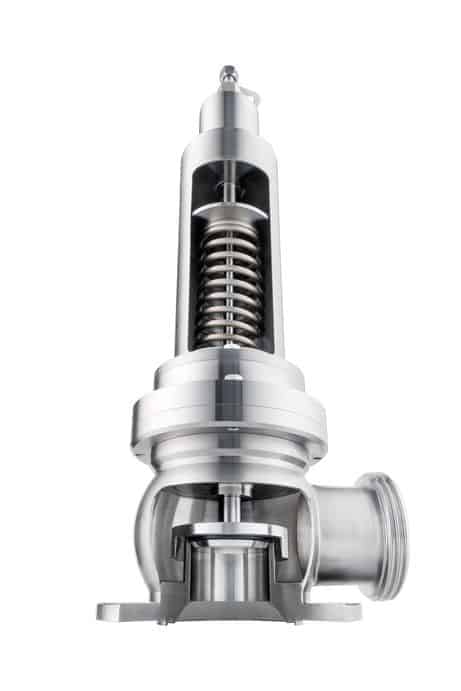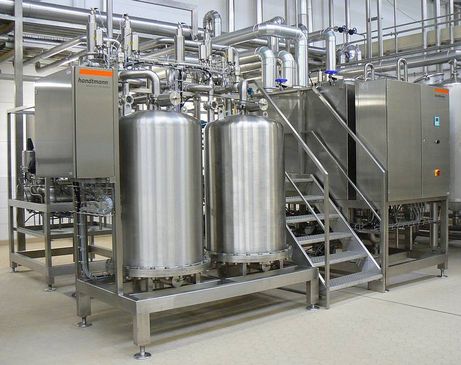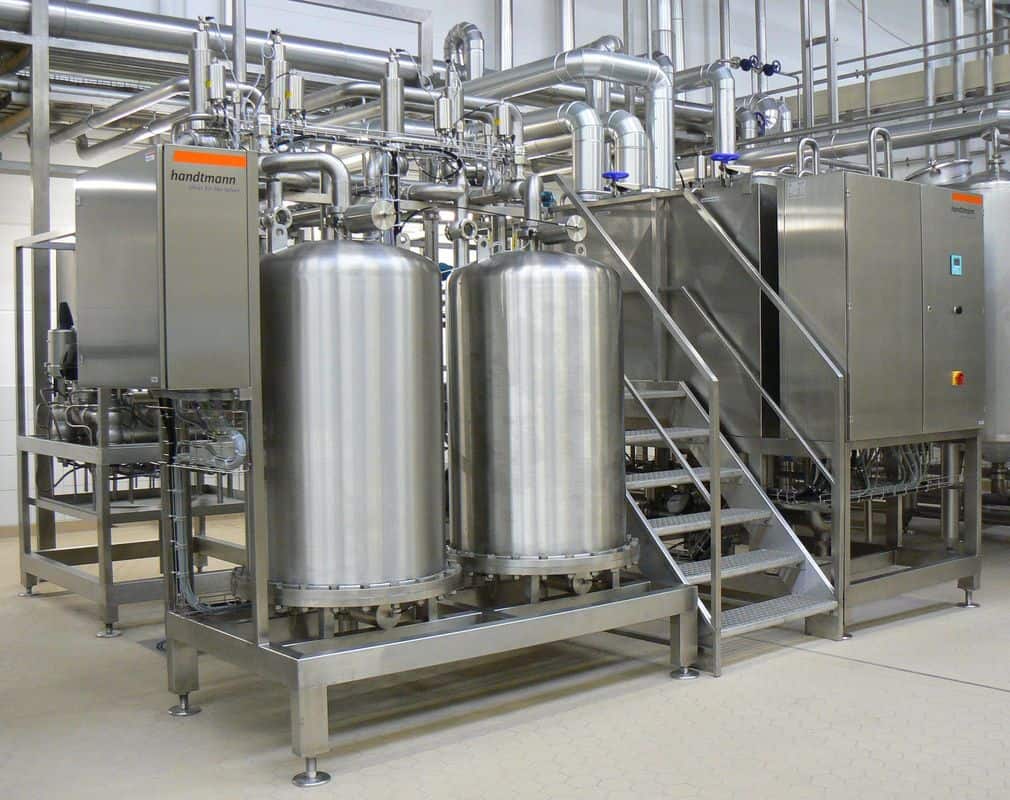
Not just a waste product: Saving money with used lye
Adequate cleaning is necessary to ensure that plants for the production and processing of foodstuffs function properly. This may be done using a 2% to 3% lye solution, as is the case in cheese production, for instance.
Instead of simply discarding this solution as a waste product, many producers rely on the know-how of the Albert Handtmann Armaturenfabrik GmbH & Co. KG, headquartered in Biberach, and its recycling techniques. The Handtmann Cross-Flow plant reconditions the soiled lye and returns it to the system. Thus the producer can reduce the required quantities of lye to a minimum, which not only reduces the environmental impact but also saves costs.
“We consumed a large amount of caustic soda and our wastewater was subject to a high degree of soiling. We wanted to reduce both, reusing the lye and discarding less of it,” explains a processed cheese production expert. “Therefore we searched around for a lye treatment solution that was economically viable and made for process efficiency – and chose the CF plant supplied by Handtmann. That proved to be a wise decision: The investment paid for itself within about 2½ years.”
The cross-flow system was installed in the factory in 2011 and has been in constant use ever since. The efficient lye treatment reduces the consumption of lye and additives, wastewater pollution as well as the amount of lye lost at the individual satellite CIPs (CIP = Cleaning-In-Place). “Previously, we discarded around 7000 litres of lye every week – and now we only need 280 litres per week.” This is not only good for the environment, but also saves money. The costs for lye and additives already went down significantly during the first year.
The environmentally friendly lye recycling functions as follows: All lye quantities that were previously discarded at the satellite CIPs are now returned to a central CIP tank that holds 60 m3. The soiled lye is then fed through the Handtmann CF plant where it is filtered and then returned to the CIP tank. This in turn supplies the satellite CIPs with the treated lye, making for an economically and ecologically sound recycling system. The plant processes around 20 m3 of soiled lye per day to produce a pure filtrate. “The results are consistently good with a filter performance of 99 percent,” reports the customer.
One of the specifications was that the lye loss should not exceed 1%. Also, a filtration capacity of 660 l/h was required. In addition, the COD value (COD = chemical oxygen demand) was to be reduced. This now remains at 3500 mg/l, i.e. significantly lower than the limit value of 5000 mg/l stipulated by the responsible wastewater authority.
The cross-flow filter technology involves fully automatic and continuous membrane filtration. The core section of the Handtmann CF plant is a ceramic membrane that can be used for micro-filtration or ultra-filtration up to a separation limit of 5 kD (kilodaltons) depending on requirements. Additionally, the ceramic module is characterized by high degrees of thermal and chemical durability, which is why this CF filter technology can be used for lye filtration in the foodstuffs and beverage industries, for example. The long service life of the ceramic membrane was also a key factor influencing the customer’s decision to opt for the Handtmann plant. In some systems, membranes have to be replaced annually. The ceramic module for the cheese factory mentioned above has been in use continuously since 2011.
The lye is fed through the ceramic membrane at a temperature of approx. 60° Celsius. The membrane is decalcified by means of acid once a week, during which the CF plant is uncoupled from the system for an hour. Apart from this brief interval, the ultra-filtration plant works around the clock, seven days a week – including Saturdays and Sundays when there is no production operation. The cross-flow system works completely autonomously, and it is meshed with the other plant components as part of a centralized, overarching system. This means that the Handtmann plant even automatically resumes operation following a malfunction affecting one of the upstream tanks.
Previous practical tests had confirmed that the Handtmann CF plant would be able to deliver the desired performance and cost savings. To this end, the Handtmann specialists installed a test facility that operated on site for two to three months. After this test had been successfully concluded, the ‘proper’ CF plant was installed and commissioned. And that went extremely quickly – thanks to the plant’s modular design. It was installed and put into operation in just two weeks. “We supervised the project from the beginning: from the pilot stage, to the dimensioning of the plant up to the commissioning phase. And of course we are always available when our service and our know-how are required,” emphasises Christopher Dethlefs, project manager for the Filtration and Separation division at Albert Handtmann Armaturenfabrik GmbH & Co. KG.



